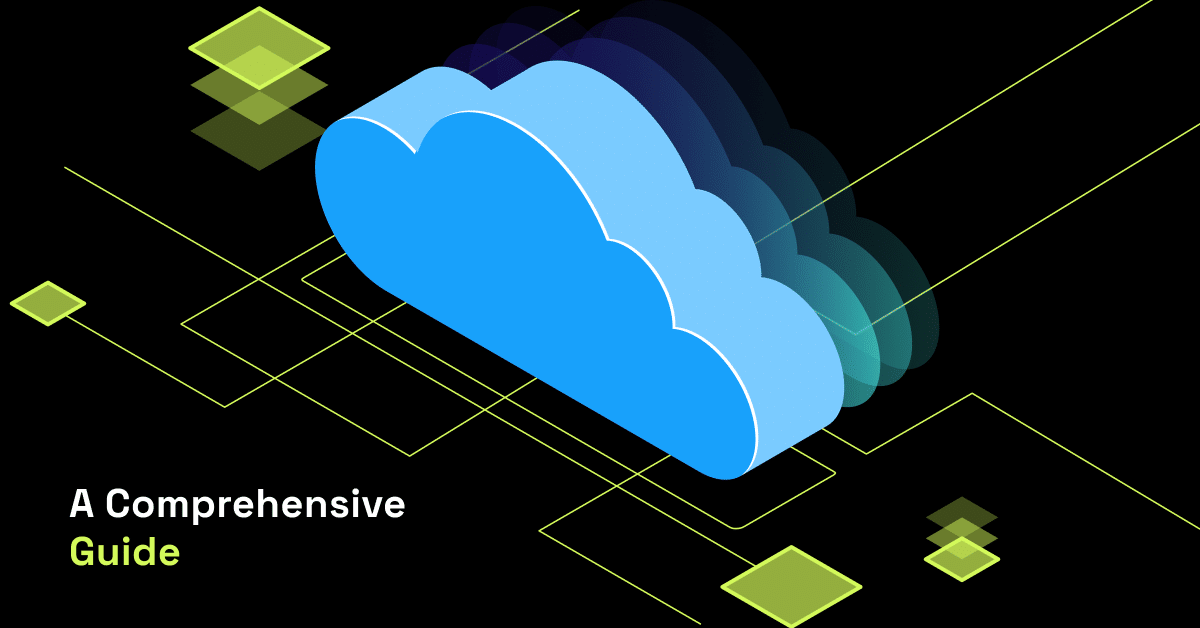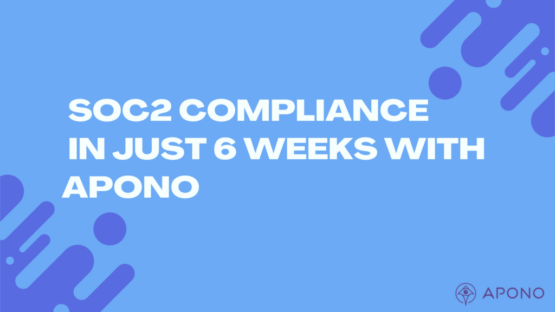Mastering the Art of Cloud Governance: A Comprehensive Guide

Ofir Stein
August 8, 2024

Cloud computing has become an indispensable asset for organizations seeking agility, scalability, and cost-efficiency. However, as businesses embrace the cloud, they must also navigate the intricate challenges of managing and securing their cloud environments. This is where the concept of cloud governance comes into play, serving as a crucial framework for establishing control, ensuring compliance, and optimizing resource utilization.
The Essence of Cloud Governance
At its core, cloud governance is a strategic approach that encompasses a set of policies, processes, and best practices designed to streamline and oversee an organization’s cloud operations. It acts as a guiding compass, aligning cloud initiatives with business objectives while mitigating potential risks and fostering collaboration among stakeholders.
Why Cloud Governance Matters
Implementing a robust cloud governance strategy is no longer an option; it’s a necessity. By embracing cloud governance, organizations can unlock a myriad of benefits that extend far beyond mere operational efficiency. Here are some compelling reasons why cloud governance should be a top priority:
1. Enhancing Cloud Security
In the ever-evolving cybersecurity landscape, cloud environments present unique vulnerabilities that must be addressed proactively. Cloud governance empowers organizations to establish comprehensive security protocols, ensuring that sensitive data is protected from unauthorized access and potential breaches. By implementing robust identity and access management (IAM) controls, data encryption, and continuous monitoring, businesses can fortify their cloud defenses and maintain a strong security posture.
2. Fostering Compliance and Risk Management
Regulatory compliance is a critical concern for organizations operating in various industries, such as healthcare, finance, and government. Cloud governance frameworks provide a structured approach to aligning cloud operations with applicable regulations and industry standards, reducing the risk of non-compliance and associated penalties. By integrating risk assessment and mitigation strategies, organizations can proactively identify and address potential vulnerabilities, ensuring the integrity and resilience of their cloud environments.
3. Optimizing Resource Utilization and Cost Management
One of the most significant advantages of cloud computing is its ability to scale resources on-demand, enabling organizations to optimize their infrastructure and reduce operational costs. However, without proper governance, these benefits can quickly diminish due to resource sprawl, inefficient utilization, and uncontrolled spending. Cloud governance equips organizations with the tools and processes necessary to monitor resource consumption, identify underutilized or redundant resources, and implement cost-optimization strategies, ultimately maximizing the return on investment (ROI) from their cloud investments.
4. Enabling Agility and Innovation
In today’s fast-paced business landscape, agility and innovation are key drivers of success. Cloud governance fosters a structured yet flexible environment that empowers teams to innovate and experiment with new technologies while adhering to established guidelines and best practices. By streamlining processes and automating workflows, organizations can accelerate their time-to-market, respond swiftly to changing market demands, and stay ahead of the competition.
5. Facilitating Collaboration and Consistency
Cloud environments often involve multiple teams, departments, and even external partners, each with their own unique requirements and perspectives. Cloud governance acts as a unifying force, promoting collaboration and ensuring consistency across the organization. By establishing clear roles, responsibilities, and communication channels, organizations can minimize silos, reduce redundancies, and foster a culture of transparency and accountability.
Crafting a Robust Cloud Governance Framework
Implementing an effective cloud governance strategy requires a well-designed framework that addresses various aspects of cloud operations. While the specific components may vary based on an organization’s unique needs and industry requirements, a comprehensive cloud governance framework typically encompasses the following key elements:
1. Cloud Strategy and Alignment
The foundation of any successful cloud governance initiative lies in a clearly defined cloud strategy that aligns with the organization’s overall business objectives. This strategy should outline the desired outcomes, prioritize key initiatives, and establish a roadmap for cloud adoption and integration. By aligning cloud initiatives with business goals, organizations can ensure that their cloud investments are delivering tangible value and supporting long-term growth.
2. Cloud Governance Policies and Standards
At the heart of cloud governance lies a robust set of policies and standards that govern various aspects of cloud operations. These policies should cover areas such as data management, security, access control, resource provisioning, and change management. By establishing clear guidelines and enforcing them consistently across the organization, businesses can maintain control over their cloud environments and mitigate potential risks.
3. Cloud Governance Roles and Responsibilities
Effective cloud governance requires a well-defined organizational structure with clearly delineated roles and responsibilities. This includes identifying key stakeholders, such as cloud architects, security professionals, and business leaders, and outlining their respective duties and decision-making authorities. By establishing a clear chain of command and accountability, organizations can streamline communication, foster collaboration, and ensure that cloud initiatives are executed seamlessly.
4. Cloud Governance Processes and Workflows
To ensure consistency and efficiency, cloud governance should encompass standardized processes and workflows for various cloud operations. These processes may include resource provisioning, change management, incident response, and compliance reporting. By automating and streamlining these workflows, organizations can reduce the risk of human error, improve transparency, and enable faster decision-making.
5. Cloud Governance Tools and Technologies
Implementing cloud governance effectively requires the adoption of specialized tools and technologies. These may include cloud management platforms, security and compliance monitoring solutions, cost optimization tools, and automation frameworks. By leveraging these technologies, organizations can gain visibility into their cloud environments, enforce policies consistently, and automate repetitive tasks, ultimately enhancing operational efficiency and reducing the risk of manual errors.
6. Continuous Monitoring and Improvement
Cloud governance is an ongoing journey, not a one-time endeavor. As cloud technologies and business requirements evolve, organizations must continuously monitor their cloud environments, assess the effectiveness of their governance strategies, and make necessary adjustments. This iterative approach ensures that cloud governance remains relevant, adaptive, and aligned with the organization’s evolving needs.
Cloud Governance Best Practices
While the specific implementation of cloud governance may vary across organizations, adhering to industry best practices can significantly enhance the effectiveness and sustainability of your cloud governance strategy. Here are some essential best practices to consider:
1. Foster a Culture of Cloud Governance
Successful cloud governance requires buy-in and active participation from all stakeholders within the organization. To foster a culture of cloud governance, it is crucial to educate and train employees on the importance of adhering to established policies and processes. Regular communication, awareness campaigns, and incentives can help reinforce the significance of cloud governance and encourage adoption across the organization.
2. Embrace Automation and Orchestration
Cloud environments are inherently dynamic and complex, making manual governance processes inefficient and error-prone. Embracing automation and orchestration can streamline various aspects of cloud governance, such as resource provisioning, policy enforcement, and compliance monitoring. By leveraging automation tools and scripting languages, organizations can ensure consistent and repeatable processes, reduce human error, and free up valuable resources for more strategic initiatives.
3. Implement Robust Identity and Access Management (IAM)
Identity and access management (IAM) is a critical component of cloud governance, as it controls who has access to cloud resources and what actions they can perform. Implementing robust IAM policies, leveraging multi-factor authentication, and regularly reviewing and auditing access privileges can help mitigate the risk of unauthorized access and potential data breaches.
4. Prioritize Security and Compliance
Security and compliance should be at the forefront of any cloud governance strategy. Organizations should adopt a proactive approach to security by implementing robust encryption, vulnerability management, and incident response procedures. Additionally, regularly assessing compliance with industry regulations and standards, such as GDPR, HIPAA, or PCI-DSS, can help organizations avoid costly penalties and maintain a strong reputation.
5. Leverage Cloud Service Provider (CSP) Native Tools and Services
Cloud service providers (CSPs) often offer a range of native tools and services designed to simplify cloud governance and management. Leveraging these tools can provide organizations with a consistent and integrated experience, streamlining operations and reducing the need for third-party solutions. However, it is essential to carefully evaluate the capabilities and limitations of these tools to ensure they align with the organization’s specific requirements.
6. Embrace Multi-Cloud Governance
As organizations increasingly adopt multi-cloud strategies, it becomes crucial to implement governance frameworks that can span multiple cloud platforms. This approach ensures consistent policies, processes, and visibility across all cloud environments, reducing complexity and enabling seamless workload portability.
7. Continuously Monitor and Optimize
Cloud governance is an iterative process that requires continuous monitoring and optimization. Organizations should regularly review their cloud governance strategies, assess their effectiveness, and make necessary adjustments to align with evolving business needs, technological advancements, and industry best practices. This proactive approach ensures that cloud governance remains relevant and effective, enabling organizations to maximize the value of their cloud investments.
Overcoming Cloud Governance Challenges
While implementing cloud governance can yield significant benefits, organizations may encounter various challenges along the way. Here are some common challenges and strategies to overcome them:
1. Resistance to Change
Introducing new processes and policies can often be met with resistance from employees accustomed to traditional ways of working. To overcome this challenge, it is essential to clearly communicate the benefits of cloud governance, provide comprehensive training and support, and involve stakeholders throughout the implementation process. By fostering a culture of collaboration and continuous improvement, organizations can gradually cultivate an environment that embraces change and recognizes the value of cloud governance.
2. Complexity and Scalability
As organizations expand their cloud footprint and adopt multi-cloud strategies, the complexity of governance can increase exponentially. To address this challenge, organizations should prioritize scalability and flexibility when designing their cloud governance frameworks. Leveraging automation, modular architectures, and cloud-agnostic tools can help organizations manage complexity and ensure seamless governance across diverse cloud environments.
3. Skill Gaps and Resource Constraints
Implementing and maintaining effective cloud governance requires a skilled workforce with expertise in cloud technologies, security, and governance best practices. Organizations may face challenges in attracting and retaining talent with the necessary skillsets. To mitigate this challenge, organizations should invest in comprehensive training programs, leverage managed services from cloud providers or third-party experts, and foster a culture of continuous learning and professional development.
4. Integration with Existing Systems and Processes
Integrating cloud governance frameworks with existing on-premises systems and processes can be a daunting task. Organizations should adopt a phased approach, gradually transitioning from legacy systems to cloud-native solutions while ensuring seamless integration and data consistency. Leveraging hybrid cloud architectures and embracing DevOps principles can facilitate this transition and enable organizations to bridge the gap between traditional and cloud-based environments.
By proactively addressing these challenges and adopting a strategic approach, organizations can overcome obstacles and successfully implement cloud governance frameworks that drive operational excellence, mitigate risks, and unlock the full potential of cloud computing.
Leveraging Cloud Governance Solutions
While organizations can develop custom cloud governance frameworks tailored to their specific needs, leveraging third-party cloud governance solutions can provide a more streamlined and efficient approach. These solutions often offer comprehensive features and capabilities, such as:
1. Centralized Management and Visibility
Cloud governance solutions typically provide a centralized management console or dashboard, offering a unified view of an organization’s cloud resources, configurations, and activities across multiple cloud platforms. This centralized visibility enables organizations to monitor and manage their cloud environments more effectively, ensuring compliance and optimizing resource utilization.
2. Policy Management and Enforcement
One of the core features of cloud governance solutions is policy management and enforcement. These solutions allow organizations to define and implement policies related to security, access control, cost management, and compliance. Automated policy enforcement ensures consistent adherence to these policies across all cloud environments, reducing the risk of misconfigurations and potential security breaches.
3. Cost Optimization and Financial Management
Cloud governance solutions often incorporate cost optimization and financial management capabilities, enabling organizations to monitor and optimize their cloud spending. These solutions can provide detailed cost analysis, identify underutilized resources, and recommend cost-saving strategies, such as rightsizing instances or leveraging reserved instances.
4. Compliance and Audit Reporting
Ensuring compliance with industry regulations and standards is a critical aspect of cloud governance. Cloud governance solutions typically offer built-in compliance checks and audit reporting capabilities, enabling organizations to assess their compliance posture, identify potential gaps, and generate detailed reports for auditing purposes.
5. Automation and Orchestration
Many cloud governance solutions offer automation and orchestration capabilities, allowing organizations to streamline various cloud operations and processes. This can include automating resource provisioning, configuration management, and incident response, reducing manual effort and minimizing the risk of human error.
6. Integration and Extensibility
Cloud governance solutions often provide integration capabilities, enabling organizations to seamlessly integrate with existing systems, tools, and processes. Additionally, many solutions offer extensibility through APIs or custom scripting, allowing organizations to tailor the solution to their specific needs and requirements.
While cloud governance solutions can provide significant benefits, it is essential to carefully evaluate and select a solution that aligns with an organization’s specific requirements, cloud environment, and long-term goals. Organizations should also consider factors such as scalability, vendor support, and the solution’s ability to adapt to evolving technologies and industry trends.
Embracing Cloud Governance for Sustainable Growth
In the ever-evolving landscape of cloud computing, embracing cloud governance is no longer an option; it is a strategic imperative for organizations seeking sustainable growth, operational excellence, and a competitive edge. By implementing a comprehensive cloud governance framework, organizations can unlock a myriad of benefits, including enhanced security, improved compliance, optimized resource utilization, and increased agility.
However, cloud governance is not a one-size-fits-all solution. It requires a tailored approach that aligns with an organization’s unique business objectives, industry requirements, and cloud maturity. By adhering to industry best practices, fostering a culture of collaboration and continuous improvement, and leveraging the right tools and technologies, organizations can navigate the complexities of cloud governance and unlock the full potential of their cloud investments.
As cloud technologies continue to evolve and businesses embrace digital transformation, the importance of cloud governance will only increase. Organizations that prioritize cloud governance and embed it into their core strategies will be better positioned to mitigate risks, drive innovation, and thrive in an increasingly competitive and dynamic business landscape.
How Apono Helps
Apono significantly enhances cloud governance by providing tools and features that automate policy enforcement, monitor activities, maintain audit trails, implement role-based access control, and integrate with other governance solutions. These capabilities help organizations maintain control over their cloud environments, ensure compliance with regulatory requirements, manage risks effectively, and optimize the use of cloud resources. By leveraging Apono’s comprehensive governance platform, organizations can achieve a higher level of security, compliance, and operational efficiency in their cloud operations.




